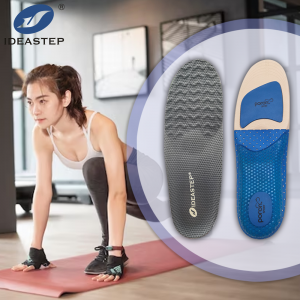
Sports insoles are usually made of many materials, so which materials of sports insoles are better?
Here are some commonly used materials and their advantages:
1. Foam: Foam is a popular material for sports insoles due to its cushioning properties. It provides shock absorption, and comfort, and can help distribute pressure evenly across the foot. Memory foam, for example, conforms to the shape of the foot, offering customized support.
2. Gel: Gel is another commonly used material in sports insoles. It provides excellent shock absorption, reducing the impact on joints and muscles during high-impact activities. Gel inserts can offer targeted cushioning and support where it’s needed most.
3. EVA (Ethylene Vinyl Acetate): EVA is a lightweight and flexible foam material often used in sports insoles. It offers good shock absorption and cushioning, helping to reduce foot fatigue and discomfort. EVA can also provide stability and support.
4. Carbon fiber: Carbon fiber is a strong and lightweight material used in high-performance sports insoles. It offers excellent arch support, and stability, and helps control excessive pronation or supination. Carbon fiber insoles are often preferred by athletes who require maximum support and control for intense activities.
5. Polyurethane (PU): PU is a durable material that provides good shock absorption and support. It can withstand long-term use and is often used in sports insoles for its resilience and durability.
These materials each have their own advantages, and it’s hard to say which one is better. You can choose according to your own needs.
Expand more related content: https://www.aideastep.com/sports-insoles/.
